Weekly round-up: 26 Mar - 01 Apr 2014
Warming early spring sunshine was the order of the day for most of us across the past week bathed in warmth (tho’ not always) especially across the weekend and beyond.
A generally cooling, mainly easterly airflow prevailed but it was weather arguably more suited to a few weeks time. That said, it was all very pleasant and enough people made use of their time to get out there and see some birds. Some even found a few birds too.
Despite the continental drift bringing only one little surprise, the main event was way off the to the northwest, where a Nearctic vagrant got the juices flowing. Almost…
Do you know? Don’t you wonder?
What’s going on down under you
We have all been here before, we have all been here before
We have all been here before, we have all been here before
We have all been here before, we have all been here before
~ “Déjà vu” CSNY 1969 ~
…and with those words from a time when I was just two years old, we’ll be musing on the fact that we have indeed “all been here before”, once we’ve mopped up the reason for such old-time retrospection.
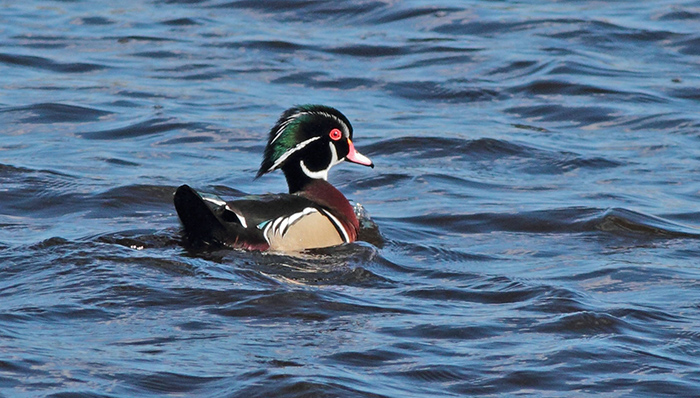
The words “Wood Duck” are one that will generally be greeted by the listing collective with a gnashing of teeth, no little head-scratching and assorted ponderous musings as to exactly what, where, when and how will the species ever be deemed worthy of a place on Category A of the British List…
No one knows how close this handsome species has come to making the official rankings (nestling as it does in within the darkest recesses of Category E along with unlikely bedfellows such as Sudan Golden Sparrow, Peruvian Thick-knee, Red-billed Leothrix and Chinese Pond Heron) but a handful of recent records have upped the ante and you’d like to think that promotion is within the brave fellow’s ducky grasp.
… this week saw another (on paper) great contender marching in to the ring marked “vagrant” ~ one of at least three in the past five years ~ with the discovery of a male Wood Duck on Loch a’Mhuilinn at Stoneybridge, on South Uist on 27th.
/wood_duck_stoneybridgec.jpg)
This appears to be the first record for the islands, certainly none appear on the RBA database ~ be it one regarding as duff or gen ~ (tho’ mention has been made of one in Stornoway a few summers ago) and those with a positive view (and a streak of optimism as long and as broad as the waters of The Minch) will see this as yet another individual for which genuine vagrancy potential must be not only considered but actually a given.
The location seems great, the time of year isn’t too shoddy either and if it were almost any other species of Nearctic wildfowl, well, the Mega Alert may have been sounded almost as soon as the news broke. And by departing after just three days, it should be “job done”.
”I was heading through Stoneybridge, South Uist on the morning of 27th March on a mission to track down some otters for a trip I was taking a couple of days later. As I passed Loch a Mhuilinn a handful of ducks and geese swam out from the edge of the loch closest to the road where they had found some shelter from the easterly breeze. Amongst them was a small duck, which to my surprise was a drake Wood Duck”.
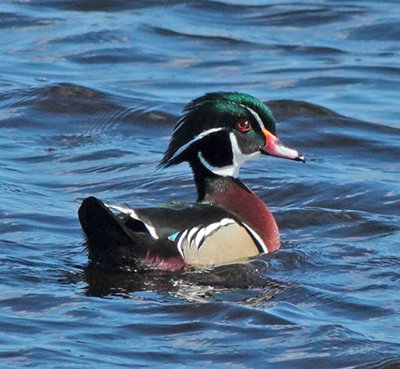
”I quickly grabbed my camera and took some shots from the car as it swam towards the far side of the loch. Unusually for me I stayed quite calm as the excitement of finding a potential rarity was somewhat tarnished with the possibility of it being an escape from a wildfowl collection. I watched the bird swim away as far as it could from the road before clambering out on a rock, flapping its wings and then heading off to some secluded spot behind a bunch of rocks where it was not visible. I didn’t notice any rings whilst the bird was briefly out of the water although it was at quite a distance whilst viewing through bins”.
”On the plus side the Wood Duck did appear to react in a wild way i.e. it swam away from the vehicle. As I pondered what had just happened and put the news out I did begin to think, what if? Could this really be a genuinely wild bird? It certainly is in the right place and if it had been a drake Ring-necked Duck or even a Bufflehead I wouldn’t have thought twice about its origin yet the doubt on the origin of all records of Wood Ducks in the UK had taken the edge off the experience”.
”In February this year two female Wood Duck were recorded in Iceland and although this is at least 600 miles north-west of the Outer Hebrides it may help over time, along with other UK records build up a potential pattern of vagrancy. At the moment the celebrations will have stay on hold and probably for some time to come”.
As Steve says, the celebrations are on hold … we have indeed all been here before where this vagrant species is concerned....but for those with a sense of daring-do, this week’s individual remained to 30th at least.
Once upon a time, several years ago, when I used to scribble and type this same sort of nonsense for “another channel”, I took up the charge for one of the best recent bidders for a Category A rating for Wood Duck ~ with the appearance a dashing drake on the Shetland Mainland, at Brow Marsh, in the middle of April 2009.
Here’s a taster of what I wrote at the time…
…” the usual boxes were swiftly ticked off (wary, fully winged and unringed) and it is a grand time of year to have American wildfowl heading northwards from wherever they have wintered. Indeed Shetland in April has a little bit of recent history as far as “mega ducks” - the dazzling drake Hooded Merganser that spent a couple of weeks on Unst in 2006 arrived on April 15th of that year. Sure there are always counter arguments (just because it is Shetland it doesn’t automatically mean it is wild - see various Chestnut Buntings, Daurian Starling, Yellow-headed Blackbird and so on) but weigh it all up and this just has to be a contender.”
Some three years on from the Shetland bird and the tub-thumping began again in earnest within the RBA review when a drake Wood Duck was found in Tacumshin’s Forgotten Corner on December 2nd 2012. The same arguments applied to that one just as they did for the Shetland bird and all of those same theories and thoughts can now be cast towards this week’s new arrival on South Uist.
But, as most folk already know, we can’t always be seduced by island credentials for a potential vagrant as birders who paid a visit to Lewis, also of course with the Outer Hebrides chain, in May 2004 will testify.
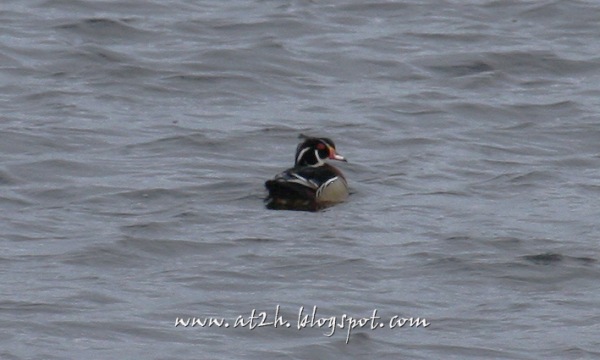
The arrival of a (wild-looking) drake Cinnamon Teal on Loch Tuamister on the May 13th of that year was adjudicated upon and then “considered to have been of captive origin and the species was assigned to Category E”. Spring Blue-winged Teal (for instance) are never binned, but there must have been good reason to consign this particularly snappy individual to the confines of a place it may never shift from.
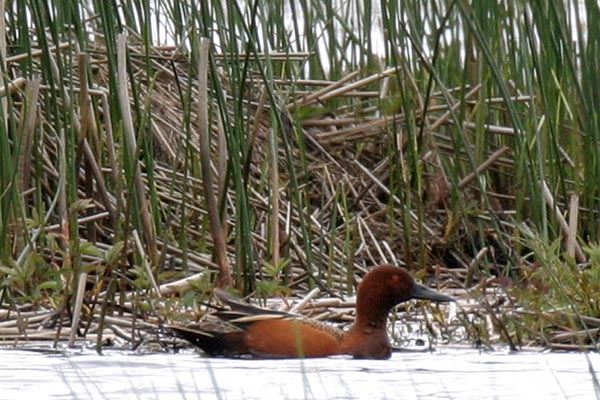
The Hebrides does, of course, boast one Nearctic “First for Britain”, the much-discussed Hooded Merganser that spent 10 days on North Uist, at Oban Trumisgarry, in late October 2000, a record which (after an eight year struggle for approval as the real deal) has since opened the door for numerous other Hooded Mergansers to wriggle their quacky rear-ends on to Category A ~ some of which would (arguably) never have stood a chance of being accepted as a British first…
What makes a Hebridean Hooded Merganser a better Category A bird than a Hebridean Cinnamon Teal or a Hebridean Wood Duck is one for the BOURC but knowing what life on a bird record committee is like, the processes and deliberations won’t have been undertaken lightly, a consensus will have been reached and anyone in the minority will accept, albeit reluctantly, the reasoning of others which mean that a certain record of a certain species remains in a certain category.
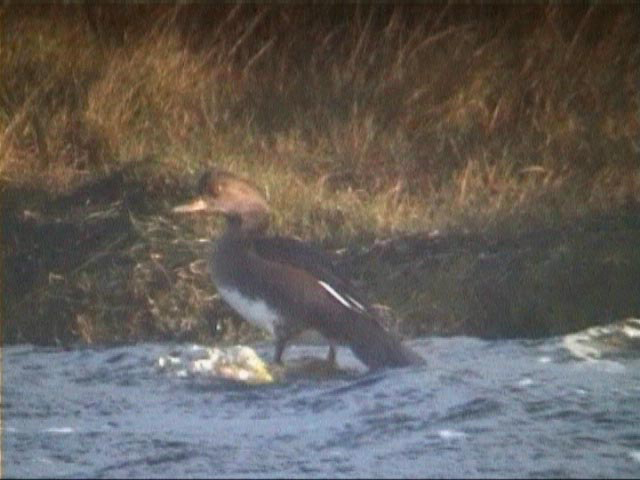
So, Shetland, Tacumshin and now South Uist are the three bearers of the Contender Flag for Wood Duck all of which have much in their favour.
Despite northern populations of this gaudy species being not only famed long-distance Eastern Seaboard travellers, their population has held steady or even increased across the past decade (to numbers far in excess of our petite sawbill chum mentioned above) and vagrancy to the Azores is regarded as being (pretty much) par for the course.
The road to acceptance closer to home for the Wood Duck looks like it will be a twisted and tortuous one for many more years to come ~ which does seem strange (and maybe a little unfair too) given that it seems to still fall foul of the rules which guided the path through towards the contentious acceptance of Hooded Merganser.
(…and in any case, a bird that appears in the titles of the brilliant genius that is “Parks & Recreation” deserves a place on any list…)
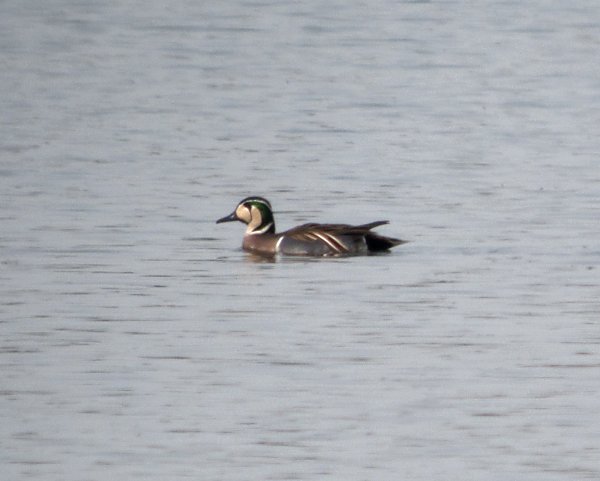
Down in to Cambridgeshire now for news of the second delectable duck of the week ~ a strikingly handsome Baikal Teal logged on Fen Drayton Pits on 29th-1st and staking a claim to be a county first in to the bargain.
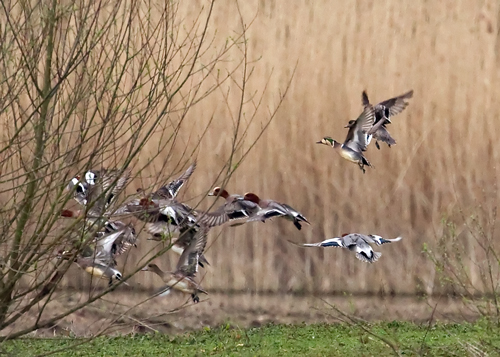
As can sometimes be the way with rare birds, there was a story attached to it…apparently seen a couple of weeks beforehand, it seems to have been regarded as an escape from the get-go and even some local birders who knew of it didn’t actually go to take a look. Roll forward a fortnight, someone else goes along (independently of any news), sees an apparently fully-winged and unringed drake Baikal Teal and raises the Birding Alarm.
This new bird is, of course, the second of the winter of 2013/14, following on from the (already accepted) drake that spent from November 30th-December 11th on the wetlands around the Marshside RSPB reserve in North Lancashire ~ and if the Cambridgeshire bird gets the thumbs-up, it will take the tally for this long-haul migrant up to eight, no mean feat considering that (ancient isotope record aside) seven of them have appeared since 2001.
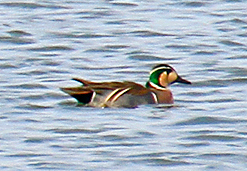
Six of those seven have been drakes (the first one, at Minsmere in November 2001 was a youngster, the others all adult) while the only birds to have appeared outside of the winter were the superb juvenile in Essex in October 2010 and last April’s drake on Flamborough Head in East Yorkshire.
…one thing though. The Cambridgeshire bird may just want to get a bit of a hurry up and head off within the next few days ~ arguably what is now edging towards a three-week late winter/early spring stay could start to get a little too long for some, especially if the weather is conducive to an exodus of wintering wildfowl. The Flamborough bird was seen on a great date (likewise those American wildfowl wanderers on Shetland) but those wanting this week’s bird as their ink-in record won’t want it to be present as May comes a’knockin’.
Given the enigmatic and nigh-on mystical aura that once surrounded this delicious species ~ no one seriously entertained the fact that we may ever get a “real one” back in the 80’s and 90’s ~ it seems ever-so-slightly curious to see it as another species where you “just” go “oooh, that’s nice!” when you see it on the pager…but that’s where this mega (as others do) lies now.
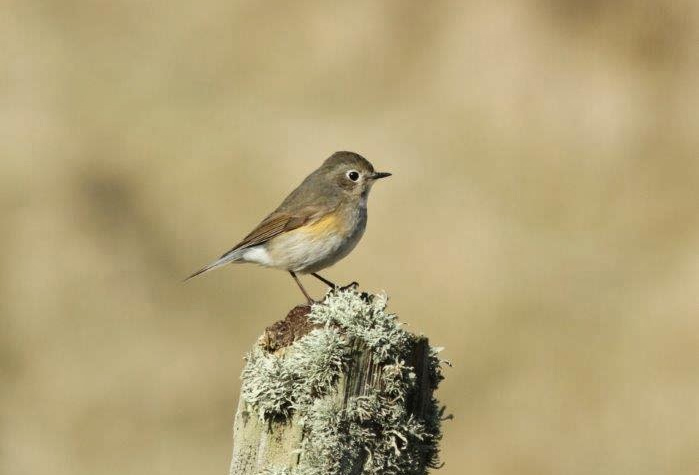
Demoted even from the “oooh, that’s nice!” to the “oh, ok, that’s interesting” category (Why? Why? Why?) is the perky, hoppy-about-gem that is Red-flanked Bluetail but there would surely have been a sugar-rush rare hit when birding staff on Fair Isle clapped eyes on one in Klinger’s Geo on 30th.
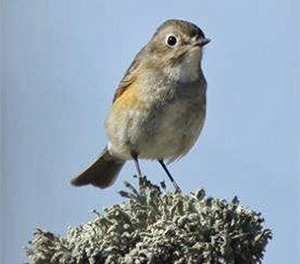
Although becoming the island’s 10th Bluetail in all, it is the first recorded there in the spring and was a particularly auspicious find for the new AW there ~ Ciaran Hatsell ~ who located the terrific little Tarsiger on just the fifth day of his new role…which definitely tops my White Stork and Kentish Plover on my 10th day of my first Cley AW season many, many years ago… :o)
This species, like the one above, is on to the second of the winter of 2013/’14, indeed this is the second within the space of a few weeks, following on from the perky little chap that entertained so many along the borderlands of Gloucestershire and Wiltshire up until March 9th.
The RBA review during the week of departure mentioned “early spring birds have been noted in the recent past on the English east coast and there’s every reason to think that we may be on for another one any day now”…sure enough with a puff of warm weather and some chipper easterlies, the Bluetail Gods delivered.
Chalk another one up for the ever-successful El Predicto….
March currently hosts two accepted Red-flanked Bluetail records, in East Yorkshire at Easington on March 31st 2007 with the second appearing on the Outer Hebrides, at Uigen, on Lewis on March 31st 2012, with another in Cork, at Galley Head on March 26th, also 2012, still waits to appear on the record.
The early days of April also hold three records ~ on Out Skerries (Shetland) on April 2nd-3rd 2007, Durlston CP (Dorset) on April 2nd-6th 2011 and at Horsey (Norfolk) on April 14th 2013. There’s also a fourth April record, later in the month, found on Holy Island (Northumberland) on April 23rd 1995.
Although it may make the passerine section a little light, the appearance of the Bluetail makes it worth our while to document the progress of last week’s Eastern duo that gave the review that little October feeling…
Suffolk’s autumn double-header both made it to another week ~ the Dusky Warbler lingering along the south side of Oulton Marshes, near Lowestoft throughout the week while the incredible tricky to pin down Olive-backed Pipit at Leiston was a brief visitor to gardens on 27th ~ but was captured for posterity in a little bit of gripping video…
Away to the north again now and to Highland where the Loch Flemington American Coot held station to 1st (nudging in to the mid 80’s now ~ 86 days and counting) while at Balranald RSPB, the wintering Pied-billed Grebe made it to Day 116 when it was logged on Loch nam Feithean on 1st.
This is the time of year that we expect to see numbers of White-billed Divers peak off our northern coasts ~ recent traditions have seen Lewis as the hub of activity but last year saw a dramatic shift as birds in Aberdeenshire began to log some significant numbers off their county, notably from Portsoy.
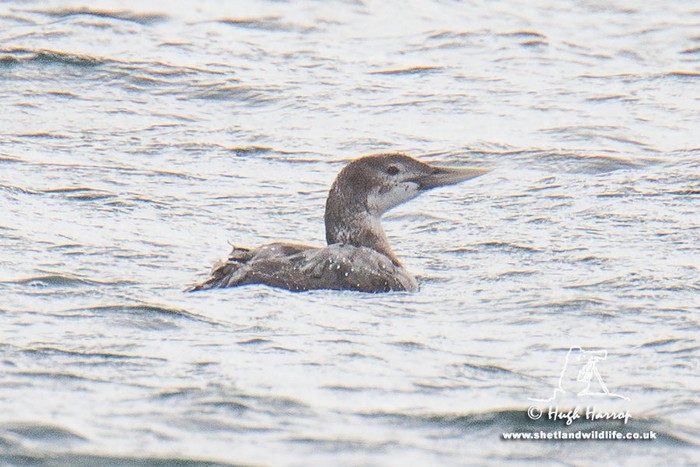
The start of the new review period saw Portsoy take centre stage once again as numbers through to the high tide on 26th rose from four, to seven and then to ten across the high tide. One was seen there on 28th but on 29th, it was back to double figures as at least ten were seen from a boat trip. Elsewhere, single passage White-billed Divers were seen at two sites in Highland on 30th ~ at Lochinver and Brae of Acnahaird and, upholding tradition, two were seen near Port Nis, at Skigersta on Lewis on 31st. The last day of the review period saw a lone Banana Beak appear at Herston, South Ronaldsay (Orkney).
Other seabirds were thin on the ground again ~ a single Balearic Shearwater was logged off the Devon coast, at Prawle Point on 27th and that was that.
Both of Scotland’s single Glossy Ibis remained in to another week ~ the mainland bird at Kinross (Perth & Kinross) was around to 27th while the islander on North Ronaldsay (Orkney) was seen to 28th at least.
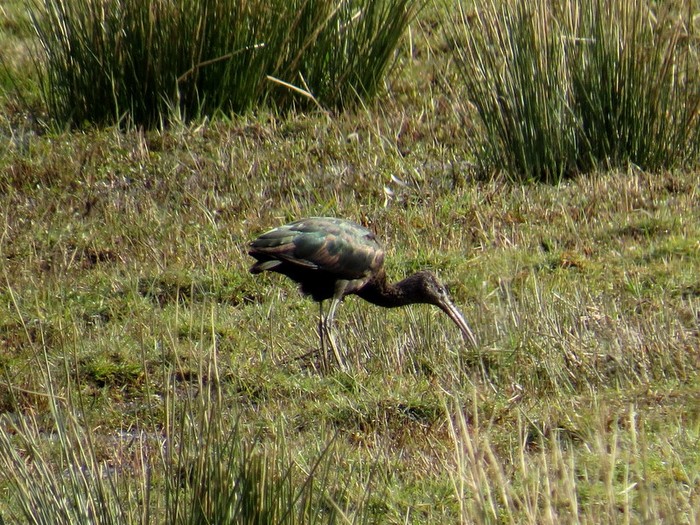
The Midlands hosted three birds this week ~ two singles remained in Nottinghamshire (at Lowdham and Collingham Pits) until the end of the weekend at least while in the West of the region, near Walsall, the bird presumably seen until very February reappeared at Brownhills on 28th. East Anglia’s only Glossy Ibis representatives were still hanging out on the Cambridgeshire side of the Ouse Washes to 26th while in the southeast three were noted, a single was at Stodmarsh and Grove Ferry to 30th while the two birds in West Sussex, at Barnham Brooks on 31st. The southwest saw Cornish singles noted at Mannacan on 26th and again on the Lizard, at Gillan Creek on 30th-31st while one was noted near Hinkley Point (Somerset) on the same date. Irish birds totalled six~ two noted over Kinsale Marsh (Co. Cork) on 29th and two remained at Ballincar (Co. Sligo) to 31st while a single lingered at Coonagh NR (Co. Limerick) to 30th and a new bird appeared over Shannagarry (Co. Cork) on 1st.
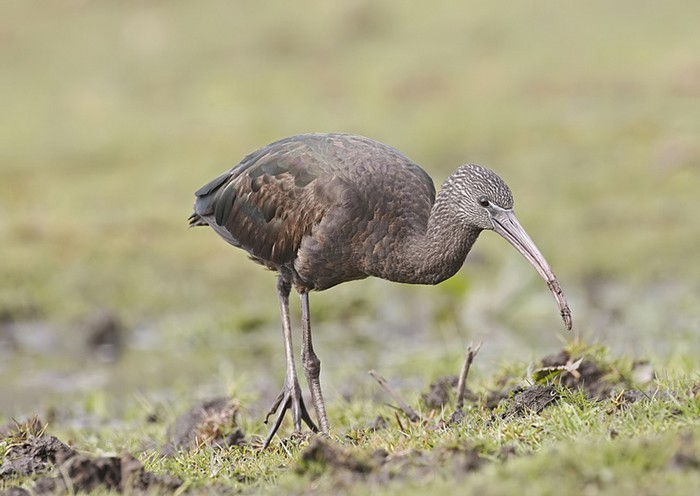
We’ve news of two Cattle Egret this week, one remained present in the fields around Steeple Claydon in Buckinghamshire to 31st with the same date seeing a new bird appear on the rocks in Mount’s Bay (Cornwall).
Numbers of Great White Egrets rose again this (after their mini-slump last week) with at least 28 birds noted across the country. Six was the maximum, logged at Shapwick Heath NNR and Meare Heath NNR on 26th and 27th, with others in the southwest, at Blaxton Creek and Bere Ferrers (Devon) on 30th and 31st. Four singles were seen around Norfolk through the week, at Welney WWT and Halvergate Marshes on 27th, around the triumvirate of marshes at Kelling, Salthouse and Cley between 28th-31st and at Horsey on 31st. Also on 31st, over in a busy Cambridgeshire, a single bird was found near Dog-in-a-Doublet. Wales hosted up to five birds, two again at Llangorse Lake (Powys) on 29th, with loners at Treforest (Glamorgan) on 28th and in Cardiff (also Glamorgan) and Bosherton (Pembrokeshire) both on 30th.
The Midlands and the southeast both held three Great White Egrets, including two for both Rutland Water (Leicestershire) and Dungeness (Kent), while the northwest and the northeast both had two birds ~ at Frodsham (Cheshire) and Marshside RSPB and Lytham St. Anne’s (Lancashire) between 28th-31st where seen in the former with birds at Hagg Bridge (East Yorkshire) and at Swillington Ings (West Yorkshire) on 26th and 30th respectively. Another appeared at Frampton Marsh RSPB (Lincolnshire) on 31st while Scotland’s sole record was from Dumfries & Galloway, one near Kirkcudbright on 30th.
Around 26 Spoonbills were seen in 17 counties this week, almost all singles except for twos for the Taw Estuary (Devon) on 28th, Blacktoft Sands RSPB (East Yorkshire) and Cley NWT (Norfolk) on 29th while there were four in Poole Harbour (Dorset) on 30th. Notable inland singles were logged at Fairburn Ings RSPB (West Yorkshire) on 27th, over Surrey’s Staines Moor on 30th and London’s Coulsdon and Nottinghamshire’s Cromwell, both on 31st. The rest of the week’s birds were spread far and wide, from east Devon to west Wales, Lincolnshire and Suffolk to County Down and Essex to Gwynedd.
In Cambridgeshire, 10 Common Cranes were seen at Eldernell on 27th with migrant singles noted over Felton (Northumberland) on 28th and Waldridge (Co. Durham), Bredbury (Greater Manchester) and Walney Island (Cumbria), all on 30th. Twos were noted in Norfolk and Somerset, at Kimberley on 29th for the former, and at Catcott Lows NR on 31st for the latter.
A potentially A-OK White Stork was noted bouncing around Lancashire on 26th ~ first seen heading over Heysham prior to 9am before appearing at Thornton around 101o, before moving across Merseyside’s Seaforth NR some 40 minutes later before tracking north over Fleetwood after midday. The same day, 26th, also saw one arrive on the south coast, seen in West Sussex, over Hurstpierpoint and April 1st saw one drift south over Cleethorpes (Lincolnshire).
Finally, we’ll dart back to Lancashire, where a Spotted Crake was reported from Marshside RSPB during the early morning of 31st.
Single Richardson’s Cackling Geese remained in Argyll and Sligo this week ~ noted at Gartbreack on Islay on 26th with the other still at Ballintemple on 27th.
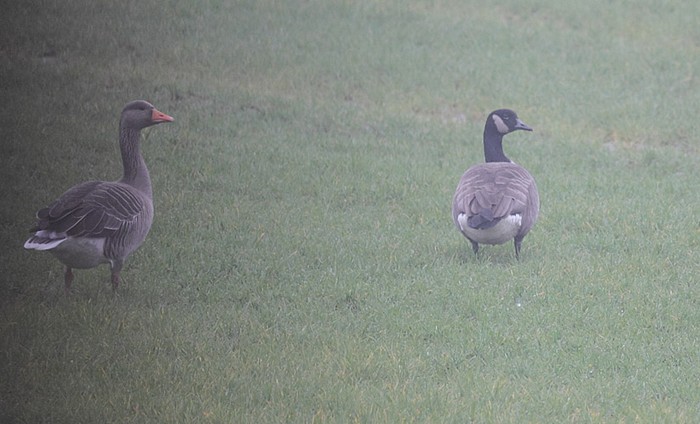
The Canada Goose sp. that has spent several weeks at Lurgangreen (Co. Louth) was finally assigned to a form this week ~ a Todd’s (form interior) being the conclusion of some detective work. The bird in question remained to 30th.
On Iona, off the coast of Argyll, a pair of white Snow Geese were seen at the end of last week (on 25th, having been present for around 11 days in all). One of these birds was metal-ringed and it seems highly likely that they could be the same two Greater Snows that spent a good while on South Uist, in the Outer Hebrides, through January and February (being last noted there on February 28th).
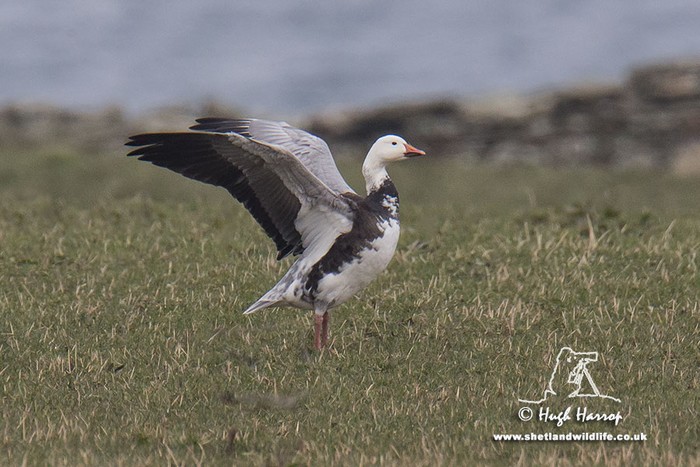
A single blue Snow Goose was seen in Angus, at leys of Crossen, near Glamis on 26th-27th and Orkney’s lovely blue bird remained near Evie to 30th. Back on the Scottish mainland, the pair of blue Snows remained in Clyde to 29th while the mixed pair at Tayinloan (Argyll) lingered to 28th.
The unringed Red-breasted Goose of unknown origin was again at Loaningfoot (Dumfries & Galloway) to 28th and one was noted again with the Dark-bellied Brents in Poole Harbour (Dorset) on 30th (in an area with no genreal access) before moving to Christchurch Harbour on 31st. Two singles Black Brants were logged this week, still on Roa Island (Cumbria) and Frampton Marsh RSPB (Lincolnshire) both to 31st.
A new drake Lesser Scaup kicks things off with the less-than-mega ducks this week ~ a drake found on Lough Gara (Co. Sligo) on 29th. The wintering drake at Tittesworth Reservoir (Staffordshire) was last seen on 27th while the female at Alturlie Point (Highland) was present again on 30th.
On Islay, the drake Ring-necked Duck was still on Loch Ballygrant as the new review period began and Waterford’s drake remained at Knockaderry reservoir to 31st and the female Ring-necked Duck was still on North Uist (Outer Hebrides) to 27th.
New was a female found on the Ouse Washes RSPB (Cambridgeshire) from 29th-31st, the first in the county for five years, since a drake was on the Nene Washes in March 2009 while All Fools Day saw a drake Ring-necked Duck found along the Humber at Spurn ~ an outstanding first for the Observatory recording area (one was seen at nearby Beacon Ponds in the mid-80’s and is the only other record for the peninsula as a whole). April 1st also a drake appears again on Loch of Asta, the fourth time in six years one has appeared there in early spring.
Suffolk birders enjoyed a handsome drake Ferruginous Duck at Minsmere between 26th-1st while a female was a good find on Dagenham Chase (London) on 30th ~ departing after only a handful of morning hours on site.
Back in Cambridgeshire, the county’s third decent duck of the week, the first-winter drake American Wigeon, remained at Pymoor to 1st, while the “old faithful” drake in Highland remained in Udale Bay to the end of March.
Northamptonshire picked up a brief drake Blue-winged Teal on 1st, found at Stanwick GPs it is just the fourth county record ~ the most recent was a five-day drake at Earls Barton in February 2001, with records prior to that coming in the summer of 1985 (at Thrapston) and a one-day April bird at Ditchford in 1979.
The new week began with seven drake Green-winged Teals still in place ~ two at Newgale (Pembrokeshire) leading the way, with further birds remaining at Kenfig NNR (Glamorgan), Morton Bagot (Warwickshire), Saltholme RSPB (Cleveland), Caerlaverock (Dumfries & Galloway) and Loch Gruinart, Islay (Argyll). Most of these lingered to the weekend while new was one drifting past Aust Warth (Gloucestershire) on the high tide on the morning of 31st and also at Burton Marsh Wetlands RSPB (Cheshire) on 1st.
Two single female King Eiders remained on station off the Irish coast this week ~ at Portnoo (Co. Donegal) to 26th and at Blacksod (Co. Mayo) to 29th. The only other bird, another queen, remained off Fidra (Lothian) also to 29th.
Up to six single Surf Scoters were logged through the week, two for England and four for Scotland. The birds down south were the young drake that remained in Mount’s Bay (Cornwall) throughout the week with the young duck still in Poole Harbour (Dorset) to 31st. The birds north of the border were adult drakes off Fisherow (Lothian) to 26th and Largo Bay (Fife) to 27th with a female reported from Campbeltown Loch (Argyll) on 1st ~ for at least a third day ~ and a drake appeared at Rerwick, on Mainland Orkney.
Breaking Hampshire’s monopoly of hosting the only shorebirds of note during the past couple of months was County Armagh’s Pectoral Sandpiper found at Reedy Flats on Lough Neagh on 30th. Almost inevitably, both the Long-billed Dowitcher and Lesser Yellowlegs were still along the south coast for a few more days ~ the former at Keyhaven Marshes to 31st and the latter still at Lepe CP to 1st.
The eternal question asked of some UK gullers as to when is a Baltic Gull not a Baltic Gull ~ answer “when it appears in Britain with no ring” ~ cropped up once again this week with the discovery of a super adult on the Restharrow Scrape at Sandwich Bay (Kent) on 28th.
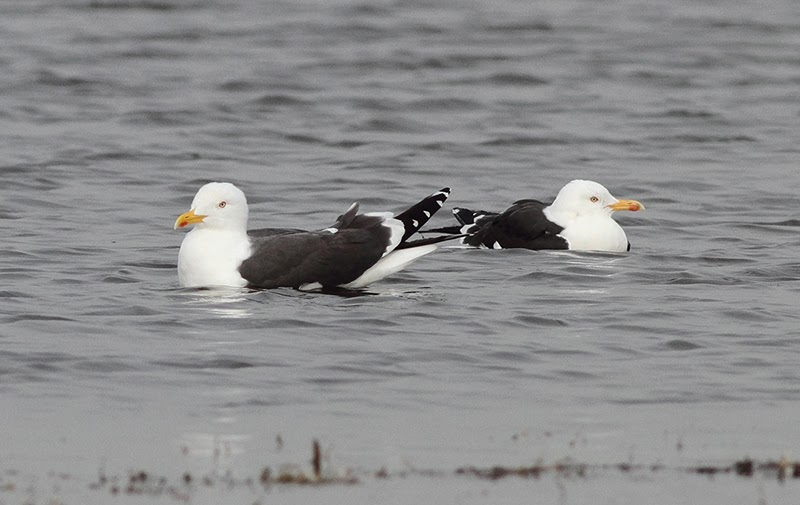
Britain’s sole accepted record of this delightful black-backed visitor from northern climes was a white-ringed adult found in April 2007 on the tip at Hempsted in Gloucestershire, spending three days or so on site. Further spring Baltic Gulls have followed (along with late summer and early autumn birds too) but none has been in possession of the relevant bit of plastic to “prove” identity. Some will say that the suite of characters exhibited by birds such as the Sandwich bird is proof enough…no ring needed.
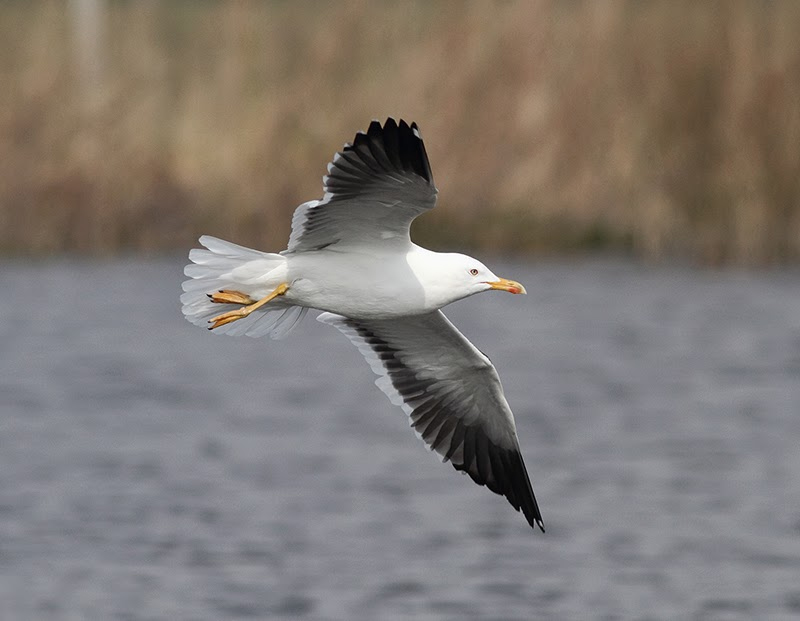
But…there is always a counter argument (or at least a counter point urging caution) ~ the lack of definitive criteria for spring adults hold records like the Kent bird back. We know that we will have dark north Norwegian intermedius passing through the UK at this time of year, and there’s every chance that intergrade/hybrid intermedius X fuscus from the same area may also be drifting through in late March and on in to April.
That said, there is nothing wrong at all with the Kent bird ~ it looks like a fuscus ~ so let’s enjoy it for what it is and congratulate the sharp-eyed Steve Ray for picking it up in the first place.
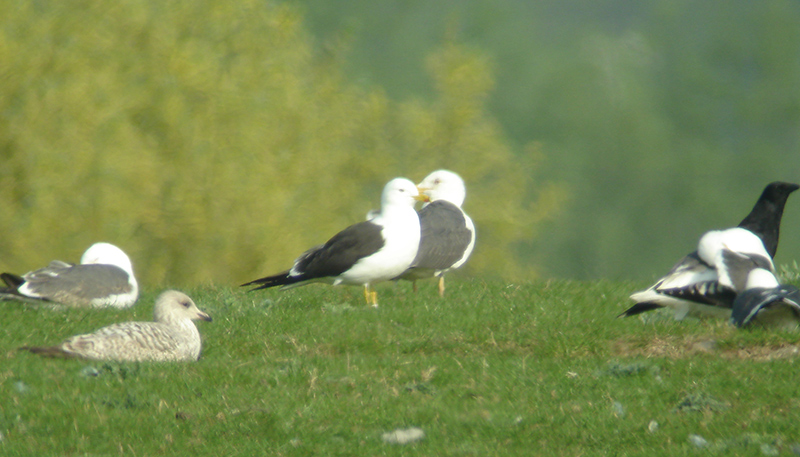
Harder to prove still would be a Heuglin’s Gull. Despite the fact that they too surely come here (in even tinier numbers than Baltic Gulls) getting a consensus on one could be nigh-on impossible. Still it was good to see mention of the species this week, a possible adult reported from North Hykeham (Lincolnshire) on 31st. A solid set of pictures is your starter for 10…
Bonaparte’s Gull is coming up to around 300 accepted records but this week saw an event that, although not unique, was ceratinly an eyebrow raiser ~ two adults present together in Cardiff Bay on 30th. Singles have been seen in the area in many recent winters, but the last time two birds were seen together was back in 2004, when a couple of adults were noted at Cobh betwen February 4th-20th. Before that, you go to a couple of first-winters that spent a mid-May day in 1998 on Anglesey...and that’s it.
For the first time in many, many weeks Ireland failed to top double figures where Ring-billed Gulls were concerned ~ nine recorded, including three (two adults and a second-winter) at Kerry’s Tralee Wetlands on 29th-1st. Another (?) was recorded at nearby Blennerville on 29th while elsewhere first-winters were in Dublin on 28th and at Nimmo’s Pier (Co. Galway) on 30th and adults were still in Wicklow (at Bray) and Cork (on Cork City Lough) on 27th and again at Cruisetown Strand (Co. Louth) on 29th.
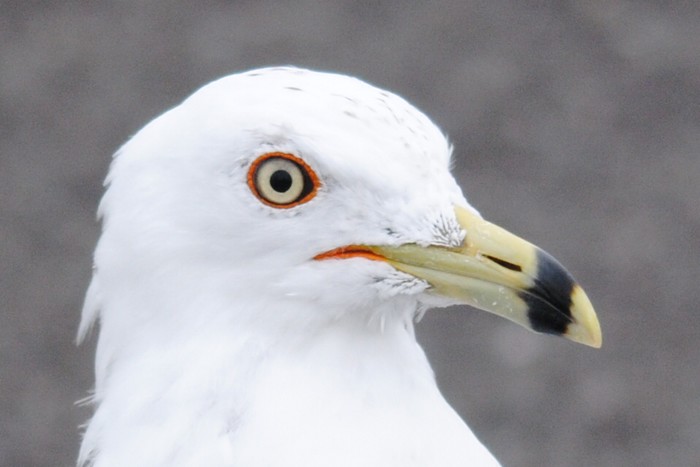
Away from Ireland, there was a Ring-billed Gull each for England, Scotland and Wales ~ a brief adult appeared at Shawell (Leicestershire) on 30th while regulars hung on at Blackpill Beach (Glamorgan) to 27th and Dingwall (Highland) to 28th, while an adult was seen at Crosby Marina (Lancashire) on 1st.
Kumlien’s Gull numbers plummeted this week, numbers under half of last week’s tally with just eight reported through the week. Cornwall hosted at least one juvenile that moved around the Mount’s bay/Drift reservoir area to 30th and a second-winter was seen again in Sennen Cove on 27th. In Devon, another second-winter was reported from Dawlish Warren on 29th and the long-staying juvenile remained at Littlehampton (West Sussex) to 1st. Out of England, the Welsh held juvenile Kumlien’s Gulls in Glamorgan in Swansea to 26th and at Crymlyn Burrows on 29th while Scotland managed one (the juvenile still on Fair Isle to 28th) and Ireland sole record was of a near-adult at Larne Lough (Co. Antrim) on 31st.
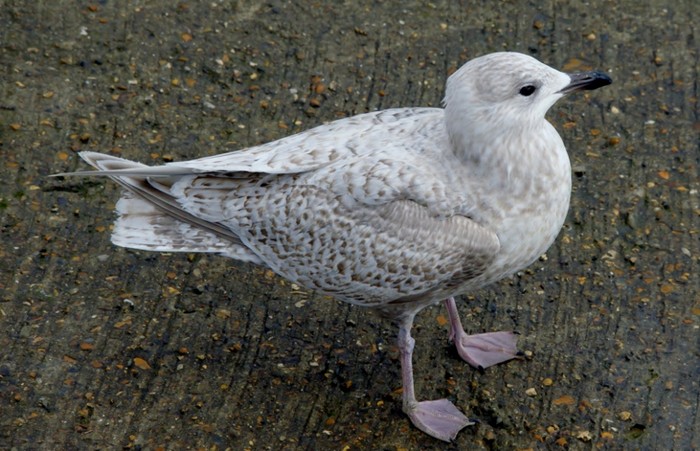
Numbers of Iceland Gulls this week pretty much mirrored those of last week ~ 66 birds recorded across Britain and Ireland ~ with Scotland and southwest England leading the way. The former held up to 17 birds (in five counties/regions) with up to eight on the Outer Hebrides, including three at Balranald on 30th, with another trio on Fair Isle from 29th. Cornwall claimed at least five of the southwest’s Lucky Thirteen, with four in Dorset not far behind.
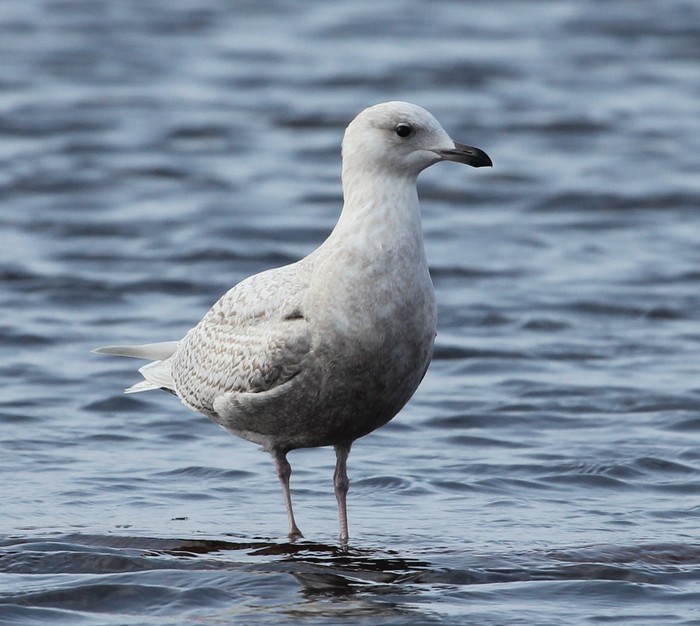
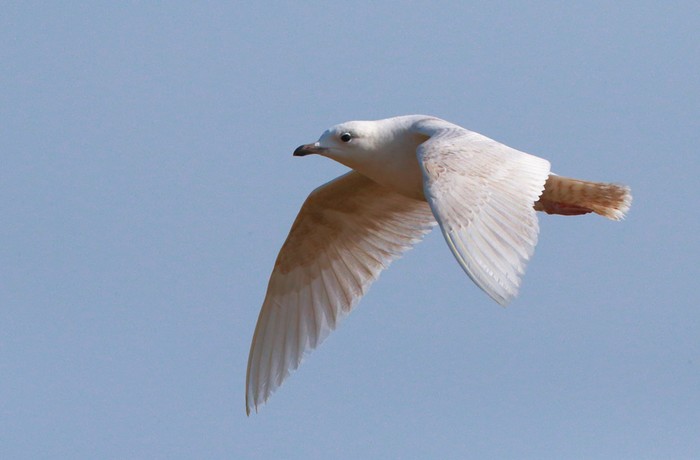
Oxfordshire hosted at least three or four of the southeast region’s nine or ten individuals whilst totals around the rest of Britain were on the low side. Ireland managed 14 birds in five counties including three at Killybegs (Co. Donegal) on 27th and half a dozen around County Cork.
Glaucous Gulls slipped a little bit through the last seven days, 55 birds logged around both Britain and Ireland. Again, as with the previous species, it was Scotland and the southwest that did reasonably well ~ 18 birds for the north, 11 for the west ~ with up to half a dozen around Argyll & Bute and four on the Hebrides, including three near Kyles Paible on North Uist on 28th. Five singles were seen in Cornwall with three in Devon while numbers elsewhere around Britain being veruy much on the low side.
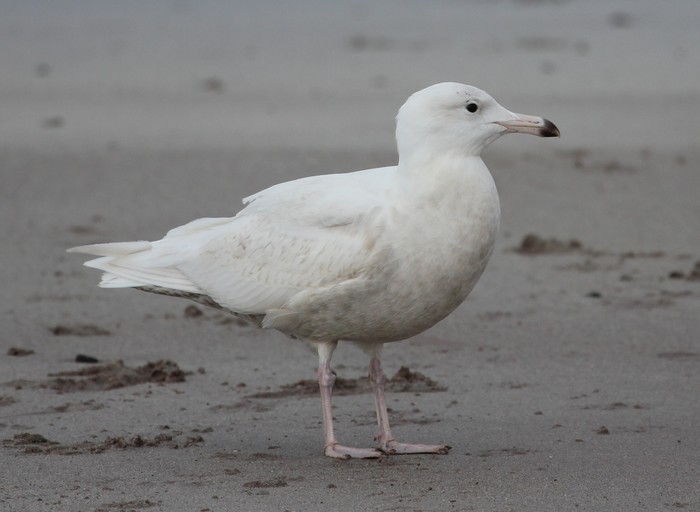
Irish birders managed 15 birds in five counties, including up to four in Waterford and four in Donegal, including three at Killybegs on 27th. Cork managed three with others in Mayo, Galway, Kerry and Wexford.
Staying in Galway, the wintering Forster’s Tern was still off Nimmo’s Pier and surrounding environs to 30th.
Finally, mopping up something from last week ~ the possible juvenile-first-winter Thayer’s Gull found at Portmagee (Co. Kerry) appears to have been, on closer inspection, either an atypical Herring Gull, or (more likely?), a kooky Nearctic hyrbid (or at least some cross-Atlantic bearing).
It didn’t take a genius to be able to predict that this week someone, somewhere was going to chance upon a lovely white morph Gyr ~ see the end of last week’s review for the stats ~ and sure enough, bang on cue one was seen around the Visitor Centre at Balranald RSPB on North Uist (Outer Hebrides) on 28th. (That’s one newly arrived vagrant with an Atlantic crossing under its belt that will be accepted from the island chain this week).
In east Norfolk, single Rough-legged Buzzards were at the Waveney Forest on 28th, Berney Marshes RSPB the following day and then to Burgh Castle on 1st ~ indeed this was the only other raptor of note this week.
With common migrants appearing in ever-increasing numbers, we were still waiting for the first real push of migrants (it is of course still only early) so we remained on the cusp of the exciting first falls of 2014. Wintering passerines continued to take centre stage for the most part, so we’ll round ‘em up first.
In Kent, both the Ramsgate and Dungeness Hume’s Yellow-browed Warblers were seen through much of the week, the former to 29th, the latter to 1st. There were just two Yellow-browed Warblers to report on this week ~ singles remaining at Uffmoor Wood (Worcestershire) to 30th and Bruton (Somerset) to 1st.
At least one female Parrot Crossbill was seen at Meenbog, Barnesmore (Co. Donegal) on 28th ~ an exceptional record (if accepted) for not only the county and northwest Ireland, but for Ireland as a whole. The database shows just one other “recent” record ~ in Mayo, at Termon, on October 17th 2003. The only others this week were reported from the Suffolk Brecks on 28th.
A new male Two-barred Crossbill in Greater Manchester proved popular as the week drew to a close ~ present at Dove Styone RSPB, on Saddleworth Moor from 30th-1st. The week had started with the controversial first-winter male (or hybrid or aberrant Common Crossbill) still in the larches at Lynford (Norfolk) along with two adult males and a female on 26th with the same date seeing at least three still around Broomhead Reservoir (South Yorkshire), at least one was on Serridge Ridge in the Forest of Dean (Gloucestershire) and the first-winter male at Farnham Heath RSPB (Surrey).
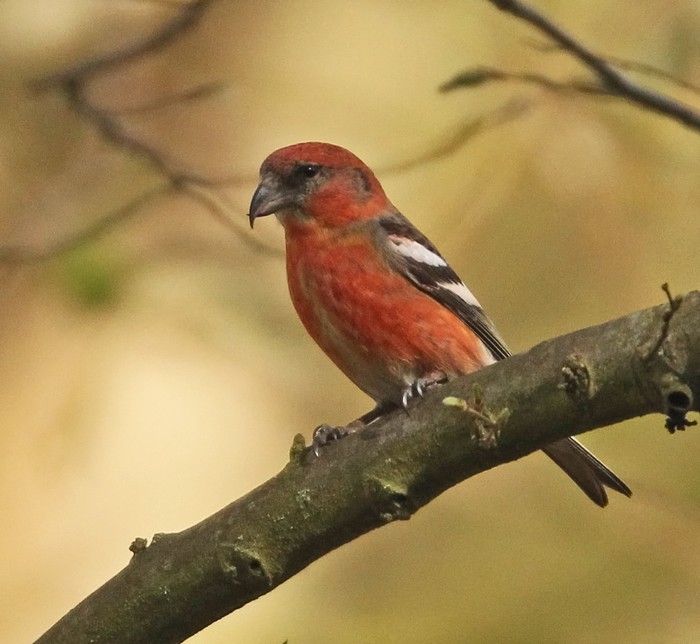
Up to five were reported from Lynford on 27th though it was four or below for the rest of the week, and three Two-barred Crossbills (two males) remained at Buttonoak in the Wyre Forest (Shropshire) to 31st.
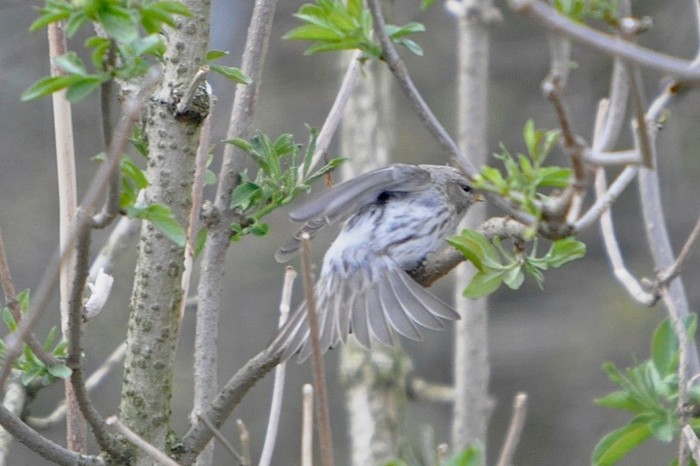
Other wintering finchy-fare included the Coues’s Arctic Redpoll that hung around the feeders in Macclesfield (Cheshire) to 30th while the Serin seen around St. Mary’s may well be the bird seen there earlier in the year. Another Serin was also logged at Landguard NR (Suffolk) on 30th ~ the second there in recent weeks ~ and two birds (one a male) were at Eastbourne (East Sussex) on 1st.
Norfolk’s wintering Richard’s Pipit was at Gramborough Hill, Salthouse to 28th with presumably the same bird then reported from Cley’s Eye Field on 29th.
Great Grey Shrikes managed a respectable 16 records this week ~ with up to four in Hampshire (Iblsey Common, Cranes Moor, Bishop’s Dyke and Shatterford) and two for Somerset (at Nether Stowey and Exford, Exmoor) ~ with other familiar winterers spread from the Soussons Plantation on Dartmoor to Thorne Moors in South Yorkshire. An exiting migrant (or continental immigrant) was found on Fair Isle on 1st.
There was a rise in the number of Waxwings seen this week, with a flock of 30 in Dundee (Angus) on 31st the largest gathering of the past seven days. Seven birds were seen in orchards at Longfield (Kent) on 27th and seven more were in Aberdeen the day before. Three lingered in Blackburn (Lancashire) and singles were seen elsewhere in Aberdeenshire and also in Moray.
The over-wintering Hoopoe was still present in Leswalt, near Stranraer (Dumfries & Galloway) to 30th and birds from the last week or two remained on St. Agnes (Scilly) and Snodland (Kent) to 1st. Newly arrived Hoopoes this week totalled nine birds, six of them in the southwest of England.
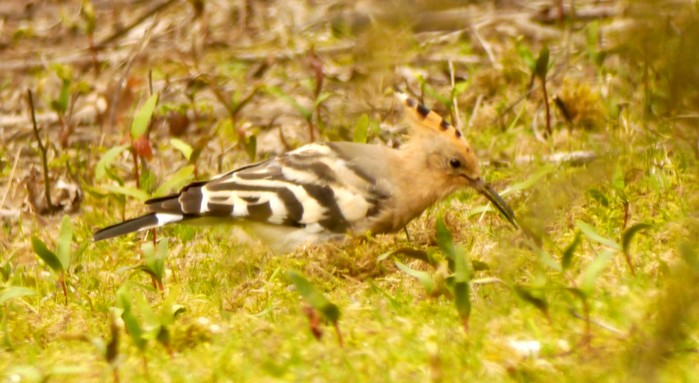
Three individuals were seen in Cornwall, at Coverack on 28th, Polgigga on 30th and Penlee Point on 31st with two in Devon, in a Plymouth garden on 26th and reported in Exeter on 30th. The region’s final bird made landfall at Portland on 1st. An inland Hoopoe was at Ryton Pools CP (Warwickshire) on 29th and another was found at Climping (West Sussex) on 29th with the final new arrival for the week coming to Northdown on the Isle of Wight on 1st.
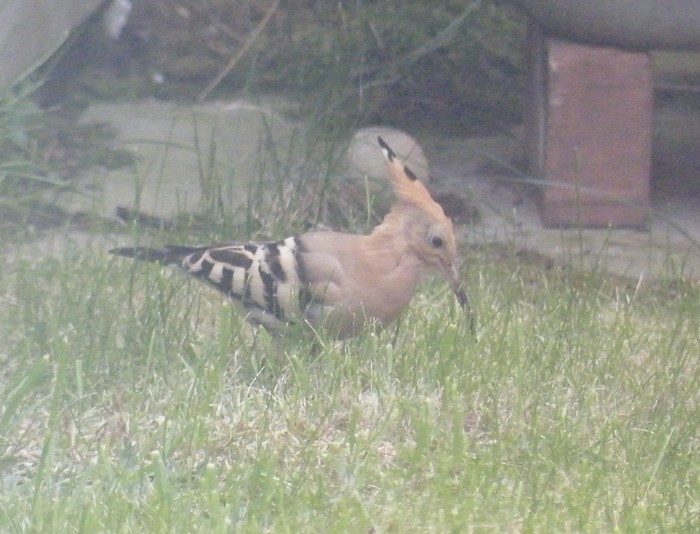
There we are then, another week done as spring looms closer still. We’re still bang in the prime time for White-spotted Bluethroat and the possibilty of a migrating Short-toed Treecreeper hitting the coast of Kent, Essex or Suffolk can’t be ignored.
The weather for the next few days appears to be changeable with April showers, but there’s every chance that we’ll register the first Red-rumped Swallow, Alpine Swift, Woodchat Shrike or even Subalpine Warbler if conditions prevail. The southwest of England or the tip of southwest Ireland may be the places that strike it lucky.
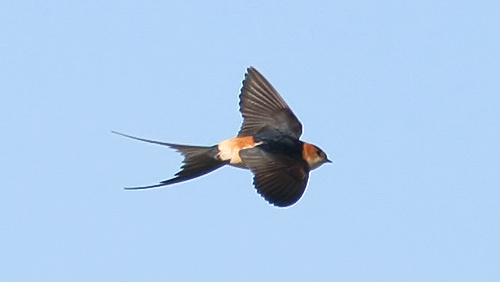
Scops Owl and Pallid Harrier are also potential “first-week-of-April” overshoots but we know that, as this week has proved, anything can, and probably will, happen.
Mark Golley
02 April 2014
Special thanks this week to
Thanks also to this week's other contributors for their photos and videos














